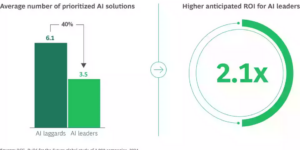Over the course of the last six years, Next Insurance has adapted its business model, its distribution method, and its product offerings. Coming up next, the InsurTech aims to offer “adaptive insurance,” the CEO reported last year.
Speaking at the InsureTech Connect conference last fall, Guy Goldstein told other InsurTech founders attending his session about his company’s history and evolution from a digital agency to an MGA and then to a one-stop small business insurance carrier, and about the need to tailor its insurance coverages to the specific needs of 1,100 different types of small business professions.
Looking to the future, Next wants to deliver embedded insurance and coverage that is “proactive and adaptive,” he said.
“Small business owners want to run their businesses—and they want, somehow, the insurance in a magic way [to] run in the background and cover them for what they need,” he said, explaining the thinking behind the “proactive and adaptive” concept.
To Goldstein’s mind, insurance has three layers in it. The “adaptive” layer is the third one.
“There’s the functional layer. I sold you insurance. There’s a price. There’s claims. There’s servicing…It needs to work,” he said, explaining the first basic layer.
“The second thing is automated. Everything that the customer wants to do, or the agent wants to do, needs to be 100 percent digital. So, they never need to speak with anyone else.”
“The third layer—this is the next thing that Next is going to do—is being proactive and adapting as the [insured small] businesses grow and change,” he said.
“Small businesses are very dynamic. It’s not something that starts and doesn’t change.” When a business first starts, it may not have any jobs, he said, referring to a contracting business. “It doesn’t get any jobs, so it doesn’t have work. And then it gets some jobs. And then it’s winter, so it doesn’t have any work. And then you buy a car. And then you have two employees. And then you get an office…
“It’s constant change,” he said.
In the insurance industry, by contrast, “we are not that dynamic, to say the least,” Goldstein said, referring to the fact that insurers check in for business updates from the insured “maybe once a year” at renewal time. That lack of engagement may mean that the business is underinsured or over-insured. “Both cases are not good.”
To avoid this, the business has to do a lot of work. “When the business does have a change”—they add a car or a new employee or a new office—”they need to speak with the insurance company.”
 “Small business owners want to run their businesses—and they want, somehow, the insurance in a magic way [to] run in the background and cover them for what they need.”
“Small business owners want to run their businesses—and they want, somehow, the insurance in a magic way [to] run in the background and cover them for what they need.”
Guy Goldstein, Next Insurance
But “constant engagement with the insurance company [is] not what the business wants to do,” he said, going on to describe the idea of the coverage magically updating to reflect the business changes.
Next Insurance aims to identify all the events that happen to the business, he said. “There are a lot of data points that we collect about the business. We know what’s happening with the business,” he said, explaining that this data should allow Next to adapt the insurance product constantly for its customers. He offered the example of pay-as-you-go workers compensation insurance that adapts to payroll changes to illustrate the concept further.
“This is where the insurance is heading forward. And this is helping the business [customer]. It doesn’t need to deal with anything. And it’s also helping us,” he concluded.
(Editor’s Note: Another InsurTech startup, Vouch, also aims to adapt to the needs of its niche customer base—high-growth startup technology businesses. Vouch and its co-founders are profiled in the fourth-quarter edition of Carrier Management’s magazine.)





















 Insurance Industry Contemplates Knock-On Effect of Tariffs to Claims, Consumers
Insurance Industry Contemplates Knock-On Effect of Tariffs to Claims, Consumers  Is State Farm General Too Big to Fail? Calif. Rate Hearing Concludes
Is State Farm General Too Big to Fail? Calif. Rate Hearing Concludes  Roof Repair and Replacement Costs Up Nearly 30% Since 2022: Verisk
Roof Repair and Replacement Costs Up Nearly 30% Since 2022: Verisk  Allstate: How Can You Save on Auto Insurance?
Allstate: How Can You Save on Auto Insurance? 














